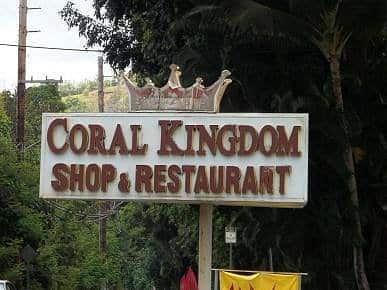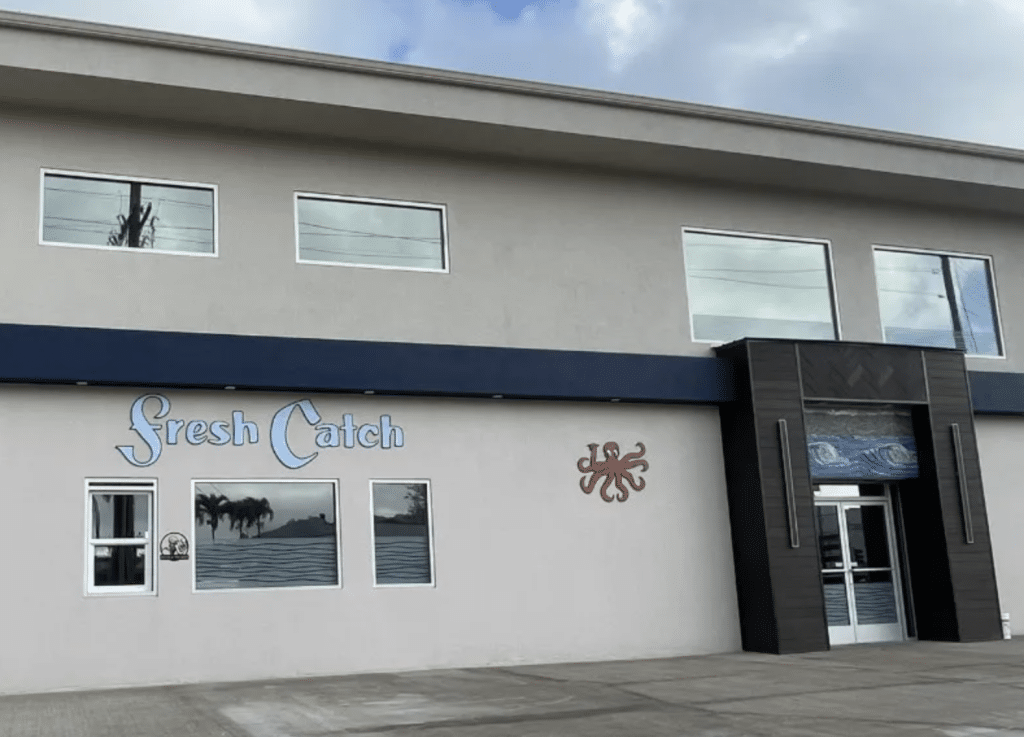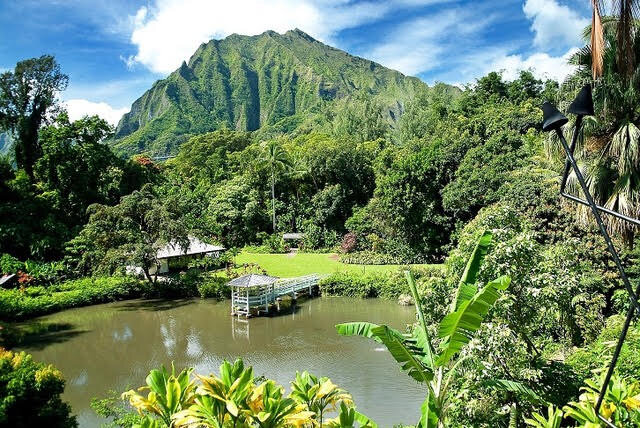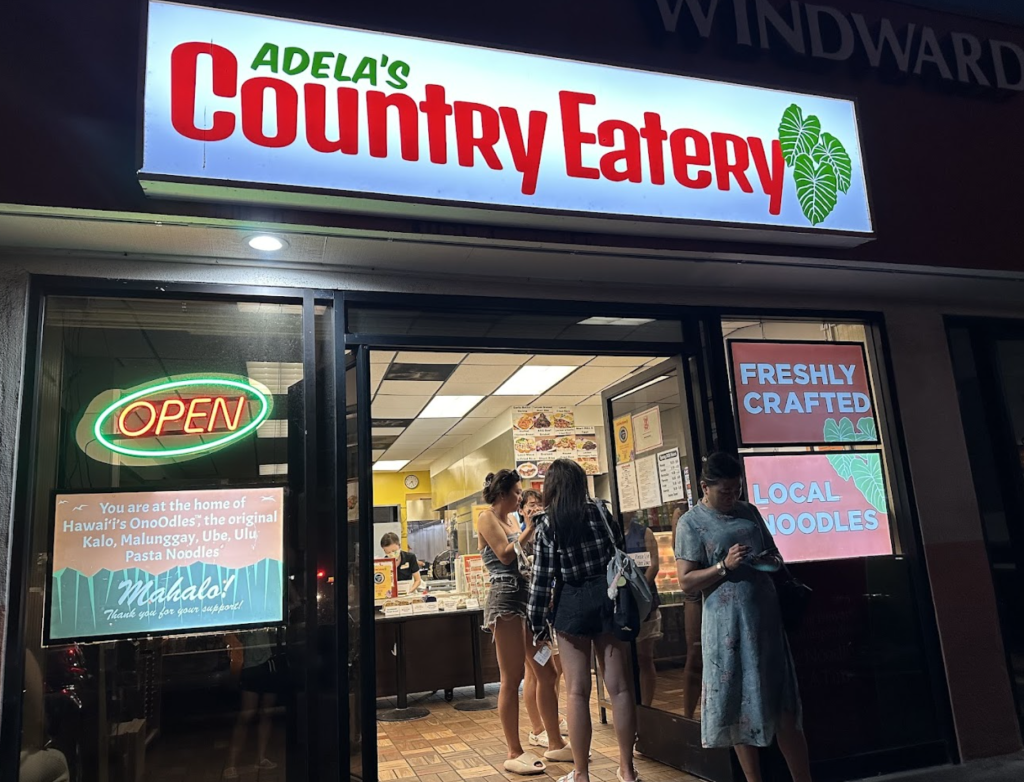Hidden Gems of Kaneohe Bay: The Local’s Guide to Windward Oahu’s Best Eats
While tourists flock to crowded Waikiki restaurants and line up at North Shore shrimp trucks, Kaneohe Bay on Oahu’s windward side quietly harbors some of the island’s most authentic dining experiences. Nestled between the dramatic Ko’olau mountains and the largest barrier reef in Hawaii, this area offers not just breathtaking scenery but a thriving food scene that reflects Hawaii’s cultural diversity and abundance of fresh ingredients.
This guide dives into the culinary treasures that make Kaneohe a paradise for food lovers seeking authenticity beyond the typical tourist trail.
Where Ocean Meets Plate: Kaneohe’s Fresh Seafood Scene
The bay itself shapes Kaneohe’s dining landscape. With an active fishing community and abundant marine life, seafood here isn’t just fresh—it’s often caught the same day it reaches the table.
Coral Kingdom: Sustainability Meets Culinary Excellence
Just minutes from Kaneohe Bay’s shores, Coral Kingdom has established itself as a celebration of Hawaiian waters. The restaurant has evolved from humble beginnings into a beloved establishment where sustainability and local sourcing take center stage.
The open-air dining area offers stunning Ko’olau mountain views, providing the perfect backdrop for seafood that captures windward Oahu’s essence. Their signature Reef Platter showcases the versatility of local fish through preparations honoring various Pacific culinary traditions—from traditional Hawaiian lomi lomi salmon to Japanese-inspired misoyaki butterfish.
Coral Kingdom partners directly with multigenerational fishing families, ensuring that each day’s catch supports the local economy. Early risers shouldn’t miss their “Fisherman’s Breakfast”—a hearty morning feast featuring eggs, Portuguese sausage, and fresh ahi belly served only from 6-9 AM, when actual fishermen often stop in after their morning expeditions.
Beyond serving exceptional food, the restaurant hosts monthly reef education workshops and supports local marine conservation. For visitors seeking both delicious meals and deeper connection to Kaneohe’s ecosystem, Coral Kingdom delivers both.
Fresh Catch: Poke Mastery in an Unassuming Setting
In a modest strip mall storefront, Fresh Catch has perfected Hawaii’s beloved raw fish salad in ways that both honor tradition and push boundaries. While mainland poke shops focus on fusion concepts, Fresh Catch remains rooted in authentic preparation techniques that Hawaiian families have used for generations.
What sets their poke apart is meticulous attention to fundamentals: premium-grade ahi cut precisely to maintain perfect texture, limu (seaweed) harvested from carefully selected coastal areas, and inamona (roasted kukui nut) prepared in-house. Their classic shoyu ahi poke delivers the perfect balance of umami and freshness that defines great Hawaiian poke.
Beyond their impressive array of over 30 poke varieties, Fresh Catch serves plate lunches showcasing diverse influences on local Hawaiian cuisine. Their garlic butter ahi belly, furikake salmon, and laulau plate demonstrate Japanese, Filipino, Chinese, and native Hawaiian techniques that have merged to create contemporary local food.
The longtime owner can often be found behind the counter, sharing stories about fishing in Kaneohe Bay and how preparation techniques have been passed through generations. Seasoned visitors know to grab poke to go and enjoy it at nearby He’eia State Park overlooking the very waters where their meal originated.
Haleiwa Joe’s At Haiku Gardens: Dining in a Hidden Paradise
While tourists fill the North Shore location, Haleiwa Joe’s Haiku Gardens remains a cherished local secret and celebration destination. Situated within lush gardens, the restaurant nestles against the dramatic Ko’olau mountains, with Japanese-inspired landscaping creating an atmosphere that feels worlds away from typical Hawaiian dining.
Visitors wind through botanical gardens featuring koi ponds, stone pathways, and native plants before reaching the restaurant. The design incorporates open walls to maximize the breathtaking surroundings, allowing the fragrance of plumeria and gentle trade winds to enhance the dining experience. Local families have celebrated special occasions here for generations, marking milestone events among the garden’s tranquil beauty.
The prime rib has achieved legendary status among residents. Marinated for 24 hours in a blend that includes Hawaiian sea salt harvested from Molokai and herbs grown on-site, then slow-roasted to perfection, it represents the pinnacle of island-style comfort food. Their seafood preparations similarly showcase local ingredients, with the Haiku Bleu Ahi featuring fresh-caught yellowfin tuna crusted with local macadamia nuts and topped with papaya-mango salsa that perfectly balances sweet and savory notes.
What visitors often miss is the restaurant’s connection to Hawaiian cultural practices. The gardens surrounding the restaurant were once part of ancient agricultural terraces, and management works with cultural practitioners to maintain the integrity of this historic land. Several staff members come from families who have lived in Kaneohe for generations, bringing authentic local knowledge to their recommendations.
For the complete experience, arrive before sunset and request a table with mountain views. As afternoon light filters through the valley and bathes the jagged Ko’olau peaks in gold, the restaurant’s signature Mai Tai provides the perfect complement to one of Kaneohe’s most spectacular natural shows.
Adela’s: The Evolution of Filipino-Hawaiian Fusion
In a modest building that was once a plantation-era general store, Adela’s has revolutionized Kaneohe’s dining scene by elevating Filipino-Hawaiian fusion cuisine to new heights. Chef Maria Kanehe-Salvador opened the restaurant as a tribute to her grandmother Adela, who immigrated to Hawaii from Ilocos Sur in the 1930s to work in the windward side’s taro fields and brought culinary traditions that would eventually blend with native Hawaiian techniques.
The restaurant’s rise from neighborhood secret to culinary destination speaks to the authenticity and innovation found in each dish. Unlike trendy fusion restaurants that merely combine elements from different cuisines, Adela’s creations reflect the natural evolution of Filipino food in Hawaii’s unique cultural landscape. The menu changes seasonally based on what’s available from local producers, with certain dishes appearing only when specific ingredients reach their peak.
Their signature Kalo Lumpia showcases this fusion perfectly—traditional Filipino spring rolls filled with locally grown taro, Kaneohe-raised pork, and Ho’io fern (native Hawaiian fiddlehead fern) harvested from the nearby mountains. The combination honors both Filipino techniques and native Hawaiian ingredients in a dish that tells the story of cultural exchange through flavor.
Breakfast at Adela’s has become a weekend ritual for many Kaneohe families. Their ube taro pancakes—a purple-hued stack made with a blend of Filipino purple yam and Hawaiian taro—are topped with haupia (coconut cream) sauce and fresh fruit from windward farms. These colorful creations have become Instagram famous, but regular customers recommend the longanisa fried rice with a perfectly runny egg on top, best enjoyed when they open their doors at 7 AM.
The restaurant’s walls display black-and-white photographs documenting Filipino plantation life in windward Oahu, many donated by longtime Kaneohe families. These visual reminders of the area’s agricultural history provide context for the food served there—cuisine born from necessity and ingenuity that has evolved into beloved local tradition.
Before leaving, check out their house-made tropical vinegars near the register—small-batch concoctions featuring lilikoi, mango, and other local fruits that capture bright, acidic notes essential to Filipino cooking with distinctly Hawaiian ingredients.
Beyond the Big Names: Kaneohe’s Hidden Food Treasures
While Coral Kingdom, Fresh Catch, Haleiwa Joe’s, and Adela’s have earned their reputations, Kaneohe’s food landscape includes numerous under-the-radar establishments worth discovering.
Early Morning Food Rituals
Some of Kaneohe’s best food experiences happen before most tourists have had their morning coffee. At the Kaneohe Yacht Club public boat ramp, local fishermen sell limited supplies of just-caught fish directly from coolers between 6-8 AM. Bring cash, arrive early, and don’t hesitate to ask for preparation recommendations—the advice comes from decades of experience.
For a more conventional breakfast, Kama’aina Grindz serves taro and ulu (breadfruit) pancakes with coconut syrup that showcase native Hawaiian ingredients in contemporary preparations. Their colorful vegetable-infused noodles, made from local crops, have earned a devoted following among residents.
Plate Lunch Perfection
No exploration of Kaneohe eating would be complete without experiencing the beloved plate lunch tradition at Dean’s Drive Inn. Their furikake-crusted ahi with garlic aioli has won awards, but regulars recommend trying the daily special, which often features experimental dishes before they make it to the regular menu.
For a taste of Kaneohe’s diverse cultural influences, Ono Korean BBQ serves plate lunches combining traditional Hawaiian sides with Korean main dishes. Their meat jun (thinly sliced beef dipped in egg batter and fried) paired with traditional mac salad creates a flavor combination that perfectly represents Hawaii’s multicultural food identity.
Sweet Treats and Coffee Culture
After exploring the bay’s waters, locals head to Deli-cious for shave ice with homemade syrups crafted from fruits grown in Kaneohe’s fertile valleys. Their lilikoi (passion fruit) and mountain apple flavors capture authentic island tastes rarely found in tourist-oriented establishments.
The Windward side has developed its own distinctive coffee culture, with Windward Coffee serving beans grown on small farms in the nearby mountains. Their Koolau Sunrise latte incorporates local honey and orange zest for a drink that captures Kaneohe’s unique terroir.
Eating By the Seasons: Kaneohe Bay’s Food Calendar
The food scene follows the rhythms of nature, with certain specialties available only during specific seasons or events.
Seasonal Specialties
Summer brings mango season, celebrated at roadside stands and farmers’ markets throughout the area. Look for local varieties like Rapoza and Haden that rarely make it to mainland markets due to their delicate nature. August brings the Windward Oahu Mango Festival, where chefs showcase creative uses of this beloved fruit.
Winter months mean peak he’e (octopus) season, when skilled free divers bring their catch to local markets and restaurants. This is the time to try tako poke and other octopus specialties that showcase the unique texture and flavor of fresh he’e.
Community Food Events
On the last Sunday of each month, the He’eia Pier General Store & Deli hosts a community cookout where guest chefs create special menus using ingredients sourced entirely from Kaneohe Bay and the surrounding ahupuaʻa (traditional land division). Reservations are essential for these popular events that highlight sustainable food practices.
The Windward Community College hosts seasonal night markets where food trucks and home cooks showcase innovative takes on local classics. These events often feature emerging food entrepreneurs testing concepts before opening permanent locations.
The Kaneohe Farmers’ Market: Where Chefs Source Their Ingredients
Every Thursday afternoon and Sunday morning, the Windward Mall parking lot transforms into a vibrant gathering of local farmers, bakers, and food artisans. Unlike more tourist-oriented markets, the Kaneohe Farmers’ Market primarily serves the local community, with many area chefs shopping here for ingredients.
Early visitors might spot chefs selecting ripe papayas and mangoes for their weekend specials or restaurant staff hand-picking herbs for evening menus. The market offers a unique opportunity to source the same high-quality, locally grown ingredients featured in Kaneohe’s top restaurants.
Don’t miss the Hawaiian honey stand, where different varieties showcase the distinct terroir of windward Oahu—from light, floral nectars collected from kiawe trees near the shoreline to richer, darker honey from hives placed in the mountain forests. These artisanal honeys appear in desserts throughout Kaneohe’s dining establishments and make excellent souvenirs.
From Farm (and Ocean) to Table: Understanding Kaneohe’s Food Sources
What makes Kaneohe’s food scene special goes beyond just restaurants—it’s the direct connection to ingredient sources that creates unmatched freshness and flavor.
Ancient Fishponds Revitalized
The restoration of He’eia Fishpond represents the revival of traditional Hawaiian aquaculture that once fed thousands. Several local restaurants, including Coral Kingdom, source fish from this ancient system that demonstrates sustainable food production practices developed by Native Hawaiians centuries ago.
Visitors can arrange tours of the fishpond to understand the ingenious loko i’a (fishpond) technology, often followed by tastings of fish raised using these traditional methods.
Kalo and Beyond: The Crops of Kaneohe
The wetlands surrounding Kaneohe Bay have been cultivated for centuries, with taro (kalo) as the traditional staple. Today, organizations like Kākoʻo ʻŌiwi are restoring traditional farming practices while supplying local restaurants with fresh produce.
Adela’s sources much of their taro from these community farming initiatives, creating a direct link between ancient agricultural practices and contemporary dining. Their support of these restoration projects helps preserve not just ingredients but cultural knowledge about food production.
For a hands-on experience, community workdays at local farms offer visitors the chance to participate in planting and harvesting, often followed by meals prepared with the very ingredients they helped cultivate.
Signature Kaneohe Dishes: Local Specialties Worth Seeking
Beyond individual restaurants, certain dishes have become emblematic of Kaneohe’s unique culinary identity. These preparations showcase the area’s exceptional ingredients and multicultural influences.
Kaneohe-Style Poke
While poke is available throughout Hawaii, Kaneohe-style preparations distinguish themselves through the inclusion of limu (seaweed) harvested from specific areas of the bay. This mineral-rich addition provides a subtle ocean flavor and distinctive texture that mainland poke enthusiasts rarely experience. Fresh Catch’s limu ahi poke represents this tradition at its finest.
He’eia Kea Pier Garlic Shrimp
Made famous by the small takeout window at the He’eia Kea Pier General Store & Deli, this local specialty features freshly caught Kaneohe Bay shrimp sautéed in a buttery garlic sauce with hints of Hawaiian chili pepper. Unlike North Shore’s more famous garlic shrimp, the Kaneohe version typically incorporates seaweed butter and is served with locally grown sweet potato rather than rice.
Luau Stew the Windward Way
This traditional Hawaiian dish takes on special significance in Kaneohe, where locally grown kalo leaves (luau) are simmered with tender pieces of pork, coconut milk, and Hawaiian sea salt. At community gatherings throughout Kaneohe—from baby luaus to graduation parties—each family’s version reflects subtle differences in preparation methods passed down through generations.
Preserving Food Traditions: The Cultural Significance of Kaneohe Cuisine
What makes eating in Kaneohe truly special is how food connects to broader cultural practices and knowledge.
Chef Kealoha Domingo hosts private dinner experiences that combine traditional Hawaiian foods with storytelling about their cultural significance. These intimate gatherings offer insight into how Kaneohe’s food traditions connect to Hawaiian values of sustainability and community.
For those interested in learning traditional food preparation techniques, Hale Kealoha offers workshops on practices like poi pounding and preparing traditional Hawaiian foods using ingredients from Kaneohe’s land and waters.
Tips for Authentic Kaneohe Bay Dining Experiences
To experience Kaneohe Bay’s food scene like a knowledgeable local, keep these insider tips in mind:
- Rise early: Many of Kaneohe’s best food experiences happen before 9 AM, from fresh fish sales to the best selection at bakeries and markets.
- Follow the weather: After heavy rains, mountain-to-ocean restaurants feature special menus highlighting mushrooms and other foraged items from the moistened Ko’olau forests.
- Ask about sourcing: Kaneohe restaurants pride themselves on relationships with local producers—asking where ingredients come from often reveals fascinating stories about local food systems.
- Look for cultural crossovers: Dishes that combine multiple influences (like loco moco with kimchi or manapua with Portuguese sausage) showcase the unique multicultural evolution of Kaneohe’s food scene.
- Respect natural rhythms: Some restaurants close when certain fish aren’t running or when conditions make harvesting difficult—a practice that demonstrates commitment to sustainability over profit.
- Explore beyond restaurants: For the full Kaneohe culinary experience, visit the farms, fishponds, and markets that supply the restaurants. Many offer tours providing context for meals.
- Make reservations for Haleiwa Joe’s: This local favorite fills up quickly, especially around sunset. Plan ahead and request garden seating for the full experience.
- Try breakfast at Adela’s: Weekday mornings offer a more relaxed experience and better chances of getting signature dishes before they sell out.
Beyond Dining: Food-Focused Activities in Kaneohe Bay
For visitors wanting to deepen their understanding of Kaneohe’s food culture, several experiences offer hands-on learning:
Ho’oulu ‘Āina Nature Park Workdays
This community-based healing center welcomes visitors to participate in sustainable farming practices. Monthly community workdays often conclude with shared meals prepared from just-harvested ingredients, providing insight into traditional food preparation.
Waiahole Poi Factory Cultural Classes
This historic establishment offers classes in traditional food preparation, from poi pounding to laulau wrapping. The hands-on workshops connect participants to ancient Hawaiian food practices that continue to influence Kaneohe’s contemporary cuisine.
Fishing with Cultural Practitioners
Several longtime Kaneohe families offer cultural fishing experiences that teach traditional methods for catching various species in the bay. These excursions typically end with lessons on proper fish cleaning and preparation, often followed by impromptu beach cookouts featuring the day’s catch.
Whether sampling poke at Fresh Catch, enjoying sustainable seafood at Coral Kingdom, experiencing the magical setting of Haleiwa Joe’s at Haiku Gardens, discovering Filipino-Hawaiian fusion at Adela’s, or exploring family-run establishments hidden throughout Kaneohe’s neighborhoods, the area offers a culinary journey connecting visitors to Hawaii’s rich cultural heritage and natural abundance. Unlike Waikiki’s commercialized dining scene, eating in Kaneohe means experiencing food with deep connections to place—where each plate tells the story of the mountains, valleys, and waters that make this corner of Oahu truly special.







